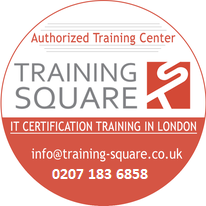CompTIA Network Plus Certification
Become a computer EXPERT from NOVICE ! Nothing satisfies you more than learning computer networks, and networking technology if you wanted to be IT geek. If you are not yet an officially certified, there's a course to get you there with CompTIA certification. CompTIA N+ certification is awarded by CompTIA which is one of the Big Giants in the IT industry. CompTIA N+ certification program will equip you with the professional skills in computer network and security, network applications and these would consequently make your services valuable to employers. CompTIA N+ Certification is for System and Network Administrators and Support Engineers to validate their ability to install, configure Network systems, Softwares, manage servers, desktop clients, printers, troubleshoot, manage network connections and computer security. The CompTIA Network+ certification enjoys wide industry recognition and is a valuable credential for Network Administrators, Network Engineers and Internet Technicians. The certification is vendor neutral, and helps create expertise in installing, configuring, and managing and maintaining basic network infrastructure. The certification offers in-depth exposure to varied aspects of IT networking including Media and Topologies, Protocols and Standards, Network Implementation and Support. Certification is achieved through a single exam. While there are no pre-requisites, candidates with a pre-existing CompTIA A+ certification along with a minimum of experience in network support or administration or academic training will benefit more through the certification process.
Overview
Network+ Training Overview:
CompTIA:
- CompTIA N+ Certification
Delivery:
- Network+ classroom training. Instructor led hands-on classes.
Network+ Certification Exams:
- 1 Exam, Real Time Simulation, Single and Multiple Choice Questions

Network+ Course Length:
- 5 Weeks or Fast Track 4 Days
Network+ Training Includes:
- Hands-on Training, Lab Exercises, Project work, Unlimited Lab Access, Free Re-training
Network+ Training Locations:
- Liverpool Street, London
- London Bridge, London
- Moorgate, London
Flexible Starting Dates:
- Network+ Training on Weekdays, Weekends and Evenings
Detailed Syllabus
CompTIA Network Plus Certification Course Highlight
- Exam: Network+ (N10-007)
Price Info
- Hands-on Tutor Led Training
- Classroom Based Practical Training
- Unlimited Practice Lab Access
- Small Size Class and Interactive Sessions
- Lab Exercises
- Project Work
- Wi-Fi Internet
- Refreshments
- Completion Certificate
- Free Re-training
- Cost is calculated at 70 percent Tuition Vatable and 30 percent Training Book(s) with 0 rated Vat
Package Offer: Great Savings!!!
Professional Package
N+ Certification - £890 + CompTIA A+ Certification - £890 : Total Price £1780
Career Package
MCSE Windows Server 2012 - £1750 + CompTIA A+ Certification - £890 + N+ Certification - £890 : Total Price £3530
Specialised Package
MCSE Windows Server 2012 - £1750 + CompTIA A+ Certification - £890 : Total Price £2640
CompTIA Network Plus Certification
Exam: Network+ (N10-007)
Networking Concepts
- Compare the layers of the OSI and TCP/IP models
- OSI Model: Physical Layer, Data Link, Network, Transport, Session, Presentation, Application
TCP/IP Model:
- Network Interface Layer, Internet Layer, Transport layer, Application Layer
Protocols relate to OSI Model
- MAC, IP, EUI-64, Frames, Packets, Switch, Routher, Hub, Encryption devices, Cable, NIC, Bridge
- Purpose and Properties of IP Addressing
- Class A, Class B, Class C and Class D IP address
- Public vs Private IP addresses, CIDR, IPv4 and IPv6, MAC Address, Subnetting, Multicast, Unicast, broadcast
- Routing and Switching:
- EIGRP, OSPF, RIP, Link State, Distance vector, Hybrid, Static vs Dynamic, Routing Interface, Hop counts, MTU, Bandwidth, Latency, Spanning Tree Protocol, VLAN, 802.1q, Port Mirroring, Broadcast domain vs collision domain, IGP vs EGP, Routing tables
- TCP and UDP ports: SMTP – 25, HTTP – 80, FTP-20,21, TELNET-23, IMAP-143, RDP-3389, SSH-22, DNS-53, DHCP-67,68, SNMP-161, BOOTPS/DHCP-67, TFTP-69, HTTPS - 443
- Common networking protocols:
- TCP, FTP, UDP, TCP/IP, DHCP, TFTP, DNS, HTTPS, HTTP, ARP, SIP(VoIP), RTP (VoIP), SSH, POP3, NTP, IMAP4, Telnet, SMTP, SNMP2/3, ICMP, IGMP, TLS
- IP Address Formats: IPv6, IPv4, MAC Addressing
- Use of IP Addressing technologies and addressing schemes
- Subnetting, Classful vs classless, CIDR, Supernetting, NAT, PAT, SNAT, Public vs Private, DHCP, Static IP, APIPA, Unicast, Multicast, Broadcast
- Common Routing Protocols IPv4 and IPv6: OSPF, IS-IS, RIP, RIPv2, BGP, EIGRP
Purpose and Properties of routing:
- IGP vs EGP, Static vs Dynamic, Next Hop, routing tables
- Wireless communication standards: 802.11 a/b/g/n, Authentication and encryption, WPA, WEP, RADIUS, TKIP.
Network Media and Topologies
- Standard cable types: CAT3, CAT5, CAT5e, CAT6, STP, UTP, Multimode fiber, single-mode fiber, Coaxial, RG-59, RG-6, Serial, Plenum vs Non-plenum, Transmission speeds, Distance, Duplex, Noise immunity, frequency
- Connector Types: RJ-11, RJ-45, BNC, SC, ST, LC, RS-232
- Physical Network Topologies: Star, Mesh, Bus, Ring, Point to Point, Point to Multipoint, Hybrid.
- Wiring standards: 568A, 568B, Straight vs Cross-over, Rollover, Loopback.
- WAN technology types: Frame relay, E1/T1, ADSL, SDSL, VDSL, Cable modem, Satellite, E3/T3, OC-x, Wireless, ATM, SONET, MPLS, ISDN BRI, ISDN PRI, POTS, PSTN, Circuit switch, Packet switch, speed, transmission media, distance.
- LAN technology: Ethernet, 10BaseT, 100BaseTX, 100BaseFX, 1000BaseT, 1000BaseX, 10GBaseSR, 10GBaseLR, 10GBaseER, 10GBaseSW, 10GBaseLW, 10GbaseEW, CSMA/CD, Broadcast, Collision, Bonding, Speed, Distaance.
- Comon Logical Network Topoloties: Peer to peer, Client/server, VPN, VLAN
- Components of wiring distribution: Vertical and horizontal cross connects, Patch panels, 66 block, MDFs, IDFs, 25 pair, 100 pair, 110 block, Demarc, Demarc extension, Smart jack, Verify wiring installation, Verify wiring termination
Network Devices
- Common Network Devices: Hub, Repeater, Modem, NIC, Media converters, Basic switch, Bridge, Wireless access point, Basic router, Basic firewall, Basic DHCP server
- Functions of specialized network devices: Multilayer switch, Content switch, IDS/IPS, Load balancer, Multifunction network devices, DNS server, Bandwidth shaper, Proxy server, CSU/DSU
- Advanced features of a switch: PoE, Spanning tree, VLAN, Trunking, Port mirroring, Port authentication
- Implement a basic wireless network: Install client, Access point placement, Install access point, Verify installation
Network Management
- Function of each layer of the OSI model: Physical Layer, Data Link, Network, Transport, Session, Presentation, Application
- Types of configuration management documentation: Wiring schematics, Physical and logical network diagrams, Baselines, • Policies, procedures and configurations, Regulations
- Network monitoring to identify performance and connectivity issues:
- Network monitoring utilities, System logs, history logs, event logs
- Different methods and rationales for network performance optimization and Troubleshooting:
- Traffic, Load Balancing, Fault tolerance, Latency, Bandwidth, VoIP, Video Applications, Uptime, symptoms and problems, identify and create and action plan, Implement test solutions, Document the solution and the entire process.
- Troubleshoot common connectivity issues: Physical issues, collisions, interferences, logical issues, port speed, port duplex mismatch, Incorrect VLAN, incorrect IP adresses, Wrong gateway, Wrong DNS, Wrong Subnet mask, Wireless Issues.
- Command line interface tool: Traceroute, Ipconfig, Ifconfig, Ping, Arp ping, Arp, Nslookup, Hostname, Dig, Mtr, Route, Nbtstat, Netstat
- Purpose of network scanners: Packet sniffers, Intrusion detection software, Intrusion prevention software, Port scanners
Network Tools
- Utilize the appropriate hardware tools:
- Cable testers, Protocol analyzer, Certifiers, TDR, OTDR, Multimeter, Toner probe, Butt set, Punch down tool, Cable stripper, Snips, Voltage event recorder, Temperature monitor
Network Security
- Hardware and software security devices: Network based firewall, Host based firewall, IDS, IPS, VPN concentrator.
- Common features of a firewall: Application layer vs. network layer, Stateful vs. stateless, Scanning services, Content filtering, Signature identification, Zones
- Methods of network access security: ACL, MAC Filtering, IP Filtering, Tunneling and encryption, SSL VPN, L2TP, PPTP, IPSEC, RAS, RDP, PPPoE, PPP, VNC, ICA
- User Authentication: PKI, Kerberos, AAA, Radius, Network Access Control, CHAP, MS-CHAP, EAP
- Device Security: Physical Security, Local and Remote Access, SSH, HTTPS, SNMPv3, SFTP, SCP, TELNET, HTTP, FTP, RSH, RCP, SNMPv1/2
- Common Security threats: DoS, Viruses, Wroms, Attackers, Man in the middle, Smurf, Rouge access points, Phishing, Policies and procedures, user training, patches and updates.

- CompTIA N+ Certification
- Network+ classroom training. Instructor led hands-on classes.
- 5 Weeks or Fast Track 4 Days
- 1 Exam, Real Time Simulation
- Training on Weekdays, Weekends and Evenings
- Finance Available 0% Interest

